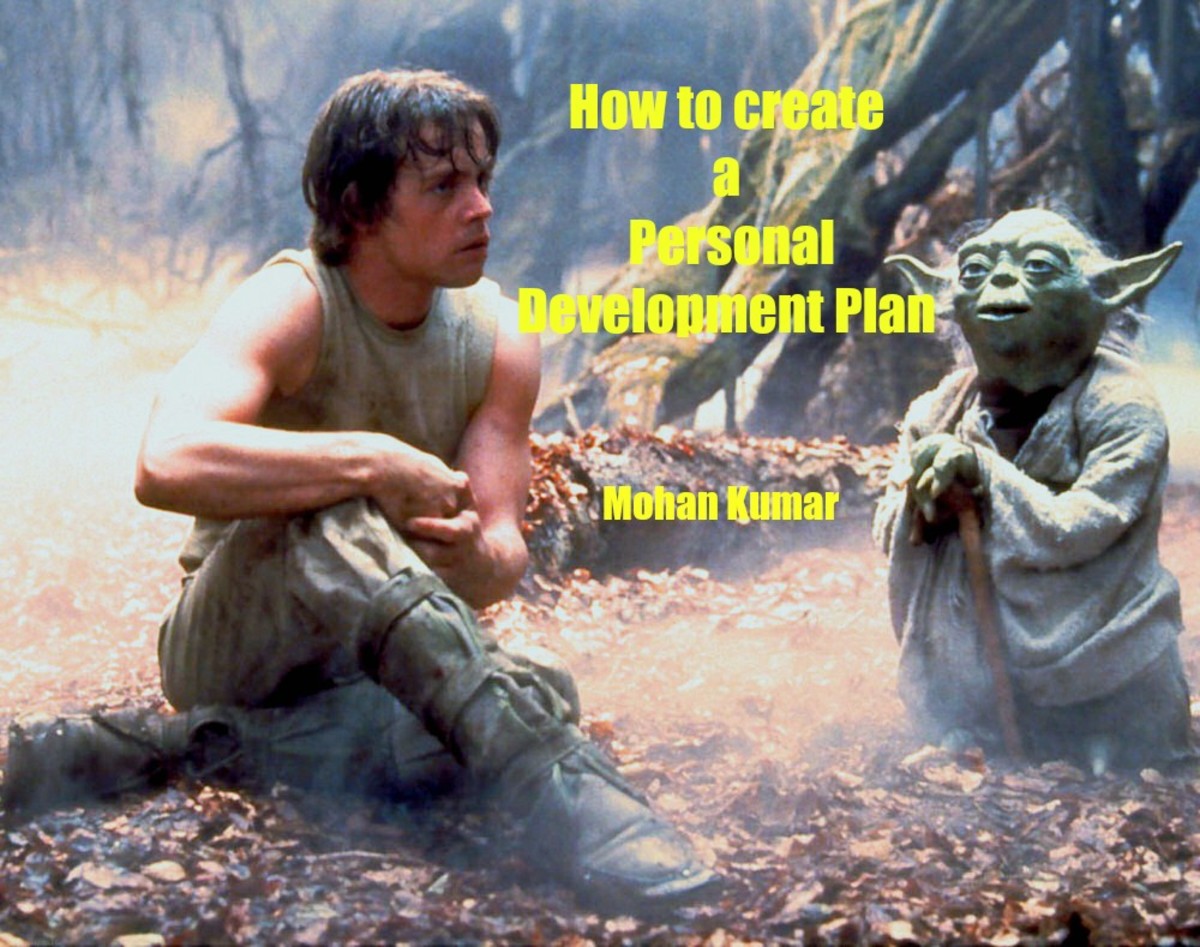How to Optimize Your Self Development Strategy
A Four Phase Process
Do you have a strategy or plan for developing your skills, increasing your knowledge, or just becoming a better you? Or are you more inclined to letting your development happen naturally, without any strategic or formal action plan? One way or another, how we approach our self development is our own individual choice. However, whether we approach our self development proactively or reactively produces a chasm between achievement and mediocrity.
So if you would like to take charge of your self development and create a strategy that dramatically increases your odds for success then read on. In the twenty plus years as a consultant and specialist in employee training and development, I’ve learned a simple but effective formula or process for optimizing your self development strategy: Awareness, Analysis, Goals and Strategies.


Seek Awareness
Who are you, really? What type of personality are you? Are you the person you want to be? Are there new skills you would like to develop or existing skills to enhance? Are you paying attention to the formal and informal feedback you are receiving? These are just some of the questions to seriously reflect upon and answer honestly. The answers to such questions will help you establish a baseline of where you are today and where you want to be in the future.
There are numerous ways to seek awareness besides answering the previously stated questions. One approach I highly recommend is an assessment that determines your personality type such as the MBTI® or the Keirsey Temperament Sorter (responding honestly yields accurate results). Other recommended tools and assessments for seeking awareness include the Emotional Quotient Inventory (EQi) and the Herrmann Brain Dominance Instrument (HBDI).
The information you receive from these assessments will provide you with thought provoking information about who you are, your preferences, your unique style, ways you interact with others, and much more.
As you build and validate your profile, you will begin seeing patterns in what really interests you in all aspects of your life – from hobbies to your career choice. Now its time to take it to the next step: analysis.
Conduct an Analysis
Now that you’ve received a wealth of information about yourself, what is it telling you? Do the results confirm what you know about yourself? Did you learn anything new about yourself? Did you discover the habits that you’ve formed over the years that have had a negative impact on your development? The answers to these and other questions begins to paint a clearer picture of who you are today so that you will know what to do to become the person you want to be in the future.
Make a list of all the areas you would like to develop or accomplishments you would like to attain. Now, reviewing your list, identify what’s preventing you from achieving your objectives, in other words, what are the barriers you encounter as you pursue your objectives. As you see the barriers unfold, realistically analyze what is within your control to overcome these barriers or obstacles. Identify the resources and support that will help you in your personal development quest.
Now its time to take action! How?
Create Goals
Why create goals?
“…Goals and challenges define a system of action, they in turn suggest the skills necessary to operate within it.” (Mihaly Csikszentmihalyi – Flow)
“A clearly defined goal (and action plan to achieve it) gives context and purpose to everything you do…” (Douglas C. Merrill – Getting Organized in the Google Era)
Well defined goals are your roadmap to achieving your self-development objectives. Using the traditional “SMART” method for creating your goals is a proven strategy that works. SMART is simple and, well, smart. Here’s how it works:
S – Specific: visualize every aspect and detail of your achieved goal. Have a clear mental picture of what your goal looks like completed. A clear and specific goal tells you what you need to do to achieve it.
M – Measurable: establish milestones and metrics by creating a goal timeline that tells you what needs to be done and by when.
A – Aggressive & Achievable: don’t make your goals too easy or you may lose interest and don’t make it too difficult or you may give up. Challenge yourself!
R – Relevant: make sure your goal leads you to accomplishing your self development objectives based on your previous analysis.
T – Timely: to ensure your success, make sure this is the right time for pursuing your goal. “Begin with the end in mind.” (Stephen Covey – 7 Habits of Highly Effective People) by going backwards, start with your goal’s deadline and break your goal down into monthly, weekly, and daily chunks.
Fantastic! You have created your goals and are ready to achieve them. To ensure your success lets look at some strategies to move you in the right direction.
Select Strategies
Plan: Setting your goals is the first step in effective planning. To make sure you stay on course, to reach your goal, you need to make sure you integrate your goal in your daily routine. Do something everyday that is directly related to your goal achievement.
Since your goal is based on your self development, practice perfecting your new skill or knowledge. Look for opportunities to apply what you’ve learned and ask for feedback to see how you are doing and make any necessary adjustments.
Schedule: Take your plan and schedule it on your calendar. This will serve as a daily reminder that you are on a course for achieving your goal and on the road to optimizing your self development.
Prioritize: Make your goal and self development a high priority in your daily activities. Think of the 80/20 principle: “The 80/20 Principle asserts that a minority of causes, inputs, or effort usually lead to a majority of the results, outputs, or rewards.” (Richard Koch – The 80/20 Principle) In other words, when you focus on your top 20% of your priorities, you will see an 80% return. Excellent odds! Remember, however, when you spend time on the 80% of lower priority activities you will only achieve a 20% return.
Use Technology: There are so many technology tools available as a resource and support for achieving your goals for self development. From your desktop, laptop, tablet, iPod, or PDA, there is no shortage in tools you can use and many of them are free! There are calendars, to-do lists, email and conversation management techniques and more that serve as resources and support. Use them! Master technology and don’t become a slave to it.
Don’t procrastinate! Don’t let another day go by without having your self development plan in place. The process of seeking awareness, analyzing who you are and where you want to go, creating goals, and using strategies to achieve those goals is the formula to ensure your success at becoming your ideal self!








